To install a recessed fireplace, begin by ensuring the area is suitable and meets safety requirements, then assemble and secure the fireplace unit according to the manufacturer’s instructions. Now moving onto the Creating a cozy and inviting atmosphere is essential for any home, and a fireplace can certainly add warmth and charm.
A recessed fireplace, in particular, offers a stylish and modern touch to any space. Whether you want to complement your existing decor or create a focal point in a room, knowing how to install a recessed fireplace can be a valuable skill.
We will guide you through the steps required to install a recessed fireplace, ensuring that the installation process is smooth and meets safety standards. By following these steps, you will be able to enjoy the ambiance and comfort that a recessed fireplace brings to your home.
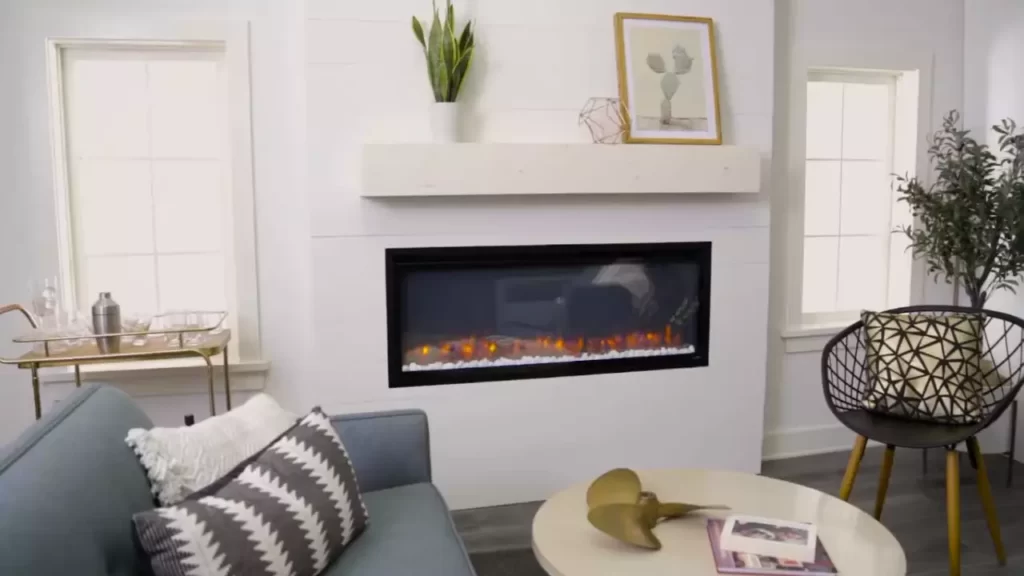
Choosing The Perfect Location For Your Recessed Fireplace
When it comes to installing a recessed fireplace, one of the most critical decisions you need to make is choosing the perfect location. The placement of your fireplace can greatly impact the overall look and functionality of your room. In this section, we will explore the factors you need to consider to ensure you select the ideal spot for your recessed fireplace.
Consider the focal point and layout of the room
The first thing you should take into account when determining the location of your recessed fireplace is the focal point of the room. Consider the existing layout and design elements to find a placement that enhances the overall aesthetic appeal. It could be a prominent wall, a central position in the room, or even the area where you spend the most time.
Moreover, take into consideration the layout of the room. Think about how people move and gather within the space. Ideally, you want your recessed fireplace to be easily visible and accessible from different areas of the room, creating a cozy and inviting atmosphere.
Determine suitable clearance requirements
Clearance requirements are essential for the safety and functionality of your recessed fireplace. Before finalizing the location, refer to the manufacturer’s guidelines to identify the necessary clearance spaces that need to be maintained around the unit. These requirements typically include minimum distances from combustible materials and adjacent walls.
Ensuring adequate clearance is crucial to prevent any potential fire hazards and to allow proper ventilation. Consider the surrounding furnishings, such as sofas, tables, and bookshelves, and make sure they have sufficient space to maintain the recommended clearances. Proper planning will not only ensure a safe installation but also deliver the best performance from your recessed fireplace.
Evaluate existing infrastructure for installation feasibility
Before finalizing the location of your recessed fireplace, evaluate the existing infrastructure to determine the feasibility of installation. Assess the availability of an electrical supply and a suitable location for the connection. Additionally, check if there is proper ventilation and if the room’s insulation can accommodate the added heat.
If necessary, consult with a professional electrician or contractor to ensure that the chosen location aligns with the existing infrastructure and meets all safety and building code regulations. Proper installation will not only provide peace of mind but also avoid any potential damage to your home.
In conclusion, choosing the perfect location for your recessed fireplace requires careful consideration of the focal point and layout of the room, clearance requirements, and the feasibility of installation based on existing infrastructure. By taking these factors into account, you can create a stunning and functional fireplace that enhances the ambiance of your space.
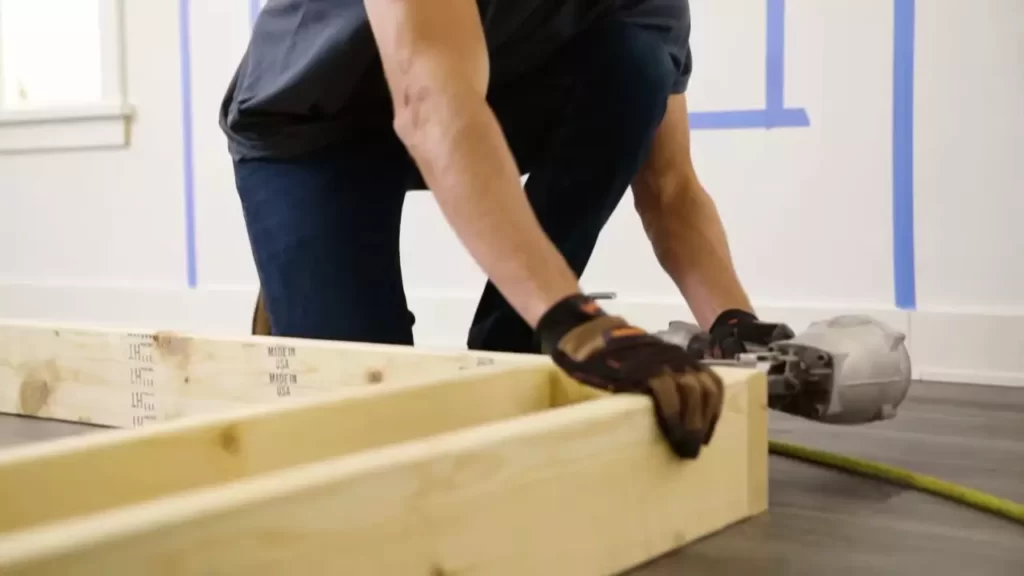
Preparing The Installation Site
Gather the necessary tools and materials
Before starting the installation, it’s important to gather all the necessary tools and materials. Having everything on hand will make the process smoother and more efficient. Here’s a list of items you’ll need:
| Tools | Materials |
|---|---|
|
|
Once you have everything ready, you can move on to the next step.
Measure and mark the location accurately
Accurate measurements and precise markings are crucial for successful installation. Follow these steps:
- Choose the desired location for your recessed fireplace. Take into consideration factors such as the availability of electrical connections and safety requirements.
- Using a tape measure, determine the exact dimensions of the fireplace kit and mark the placement on the wall or ceiling.
- Avoid making any assumptions about the location. Use a level to ensure that the markings are perfectly straight and aligned.
By measuring and marking the location accurately, you’ll eliminate any potential issues during the installation process.
Prepare the wall or ceiling for installation
Before installing the recessed fireplace, it’s important to prepare the wall or ceiling to ensure proper installation and stability. Follow these steps:
- Clear the area of any obstacles or debris that may hinder the installation process.
- If required, install insulation in the wall or ceiling to provide added protection and energy efficiency.
- Check for any electrical wiring or plumbing behind the wall or ceiling. Make sure to avoid any potential hazards.
- Securely attach the mounting hardware to the wall or ceiling, following the manufacturer’s instructions.
By adequately preparing the installation site, you’ll create a solid foundation for your recessed fireplace, ensuring its longevity and functionality in the long run.
Step-By-Step Installation Process
Installing a recessed fireplace can add ambiance and warmth to any room, creating a cozy atmosphere for you and your family to enjoy. If you’re ready to take on this project, follow this step-by-step installation process to ensure a successful and safe installation.
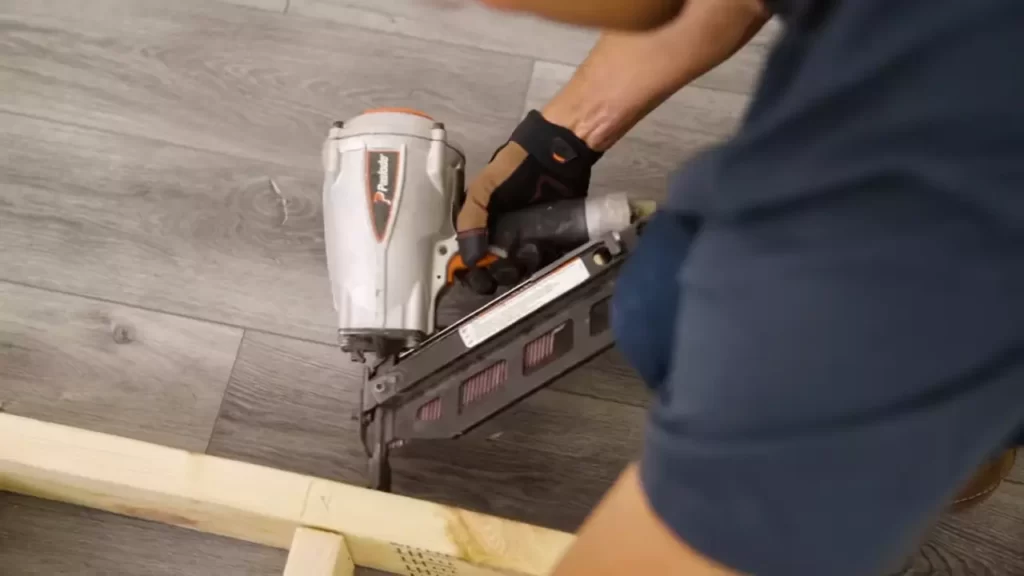
Installing the frame and support structure
Before starting the installation process, it’s important to measure the area where the fireplace will be installed. Once you have the measurements, it’s time to install the frame and support structure for the fireplace unit. Here’s how you can do it:
- Create a sturdy and level base by using metal brackets or wooden supports.
- Position the frame in the desired location and secure it using screws or nails.
- Ensure that the frame is level and plumb using a level tool.
- Add insulation around the frame to prevent heat transfer to adjacent walls.
Running electrical and gas lines, if applicable
Depending on the type of fireplace you’re installing, you may need to run electrical and gas lines. It’s crucial to follow safety guidelines and local building codes during this process. Here’s how you can run the necessary lines:
- Consult a professional electrician or gas technician to ensure proper installation.
- Plan the route for the electrical and gas lines, considering safety and aesthetic aspects.
- Use conduit or protective tubing for electrical wiring.
- Connect the gas line to the fireplace unit, ensuring a secure connection.
- Test the connections for leaks using a gas leak detector solution.
Mounting the fireplace unit securely
Once the frame and support structure are in place, it’s time to mount the fireplace unit securely. Here are the steps to follow:
- Ensure that the fireplace unit is compatible with the frame and support structure.
- Carefully lift the fireplace unit and position it into the frame.
- Secure the unit by following the manufacturer’s instructions, using screws or brackets.
- Double-check that the unit is level and secure to prevent any accidents or damage.
Connecting the ventilation system
An effective ventilation system is essential for the safe operation of a fireplace. Follow these steps to connect the ventilation system properly:
- Refer to the manufacturer’s instructions for the specific venting requirements.
- Choose the appropriate venting system based on the unit’s specifications.
- Connect the venting system to the fireplace unit, ensuring a tight and secure fit.
- Check for any leaks or gaps in the ventilation system and fix them accordingly.
By following these step-by-step instructions, you can successfully install a recessed fireplace in your home. Remember to prioritize safety and consult professionals when necessary. Enjoy the warmth and ambiance provided by your new fireplace!
Safety Measures And Compliance
One of the most important aspects of installing a recessed fireplace is ensuring the safety of your home and its occupants. It is crucial to follow proper safety measures and comply with building codes and regulations to prevent any potential hazards. In this section, we will discuss the key factors to consider when it comes to safety and compliance with the installation of a recessed fireplace.
Ensuring proper ventilation and air circulation
Proper ventilation and air circulation are essential for the safe operation of a recessed fireplace. Without adequate ventilation, the accumulation of toxic gases such as carbon monoxide can pose a serious health risk. There are a few important steps to take to ensure proper ventilation:
- Install a carbon monoxide detector near the fireplace area to alert you of any potential gas buildup.
- Ensure that the fireplace is properly connected to an external vent or chimney to allow the safe release of combustion byproducts.
- Regularly inspect and clean the vents to remove any obstructions or blockages that may hinder airflow.
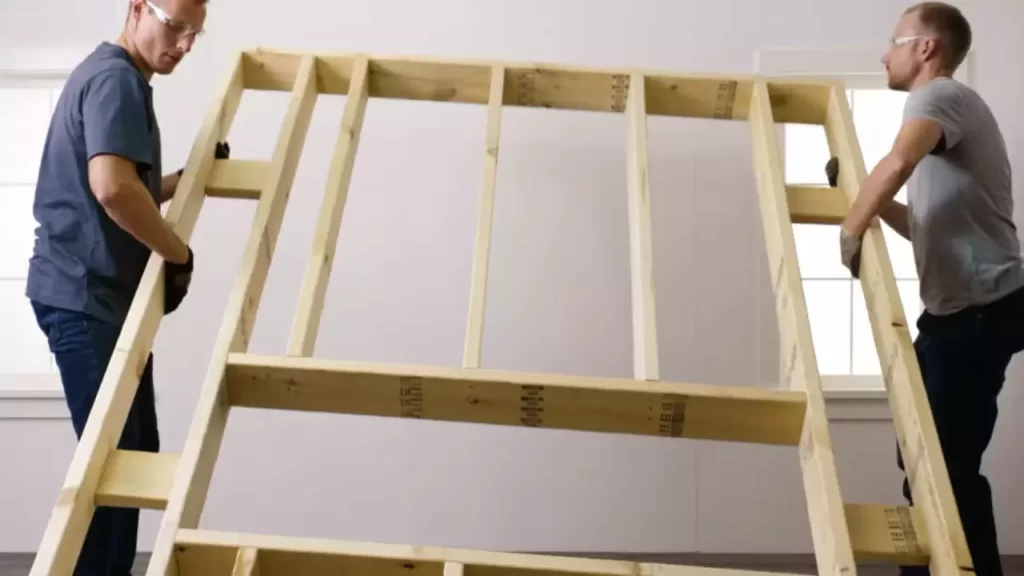
Complying with building codes and regulations
When installing a recessed fireplace, compliance with building codes and regulations is not optional – it is mandatory. Failure to comply can not only lead to safety hazards but also legal consequences. Here are some important aspects to consider:
- Obtain the necessary permits and approvals from local authorities before starting the installation.
- Follow the manufacturer’s guidelines and instructions for installation to ensure compliance with safety standards.
- Adhere to the minimum clearance requirements specified by building codes to prevent the risk of fire.
- Use fire-resistant materials around the fireplace to minimize the spread of flames in case of a fire.
Conducting thorough inspections and testing
Before and after the installation of a recessed fireplace, it is crucial to conduct thorough inspections and testing to ensure everything is functioning properly. Here are a few steps to consider:
- Inspect the surrounding structure for any potential weaknesses or vulnerabilities.
- Test the fireplace components, including the ignition system, fuel lines, and safety features.
- Check that the fireplace is properly sealed to prevent the leakage of toxic gases.
- Verify that the fireplace meets the required efficiency standards to avoid excessive energy consumption.
By following these safety measures and complying with building codes and regulations, you can enjoy the warmth and beauty of a recessed fireplace while ensuring the well-being of your home and loved ones.
Finishing Touches And Aesthetics
Choosing the Right Decorative Surround or Trim
One of the crucial elements in the installation of a recessed fireplace is choosing the perfect decorative surround or trim. This is the finishing touch that will complete the overall look and feel of your fireplace. When selecting a surround or trim, you need to consider your personal style, the aesthetic of your space, and the materials that will complement your fireplace.
There are numerous options available, ranging from traditional to modern designs. For a classic and timeless look, you can opt for a marble or granite surround. These natural stones not only add elegance but also ensure durability. If you prefer a more contemporary feel, a sleek metal or glass trim might be the perfect choice. Don’t shy away from experimenting with unique materials such as reclaimed wood or mosaic tiles for a personalized touch.
Finishing the Wall or Ceiling Around the Fireplace
Once the fireplace itself is installed, it’s time to pay attention to the walls or ceiling surrounding it. This step is crucial as it helps create a seamless integration of the fireplace into your overall home design. Depending on your preference and the existing decor, you can choose to paint the wall or ceiling in a neutral shade that highlights the fireplace or go for a contrasting color that adds visual interest.
Another option is to use wallpaper or textured finishes to create a statement wall. This will not only accentuate the fireplace but also enhance the ambiance of the room. Additionally, consider using materials such as stone veneer or reclaimed wood to create a textured backdrop that adds warmth and character to the space. Remember, the key is to create a cohesive and harmonious look between the fireplace and its surroundings.
Enhancing the Ambiance with Lighting and Decor
Lighting plays a vital role in creating the perfect ambiance for your recessed fireplace. It can transform the mood of the room and highlight the beauty of the fireplace itself. Consider installing dimmable LED lights around the fireplace to create a soft, cozy glow. These lights will not only add a touch of warmth but also provide the flexibility of adjusting the brightness according to your mood or occasion.
In addition to lighting, carefully curating decor items around the fireplace can further enhance its aesthetic appeal. Choose art pieces, sculptures, or decorative objects that complement the style and theme of the space. A strategically placed mirror can reflect the flickering flames, creating a sense of depth and brightness.
Lastly, don’t forget to add some plush cushions or a cozy rug in front of the fireplace to create a comfortable and inviting seating area. This will not only add comfort but also make the fireplace the focal point of the room.
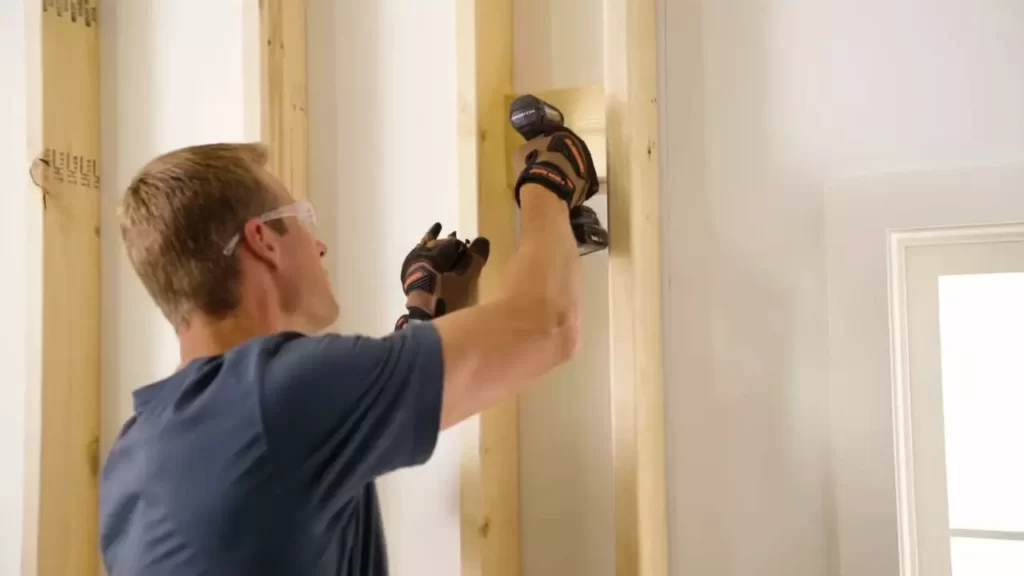
Maintenance And Care Tips
Proper maintenance and regular care of your recessed fireplace are essential to ensure its longevity and efficient performance. By following a few simple steps, you can keep your unit clean, inspect and maintain its gas or electrical components, and troubleshoot common issues.
Regular cleaning and dusting of the unit
To keep your recessed fireplace looking pristine and operating at its best, regular cleaning and dusting are necessary. Here are a few tips to help you maintain a clean and dust-free unit:
- Before cleaning, always make sure the unit is turned off and cool to the touch.
- Start by removing any loose debris or ash using a small brush or vacuum cleaner with a brush attachment.
- Next, gently wipe the surface and glass with a soft, lint-free cloth to remove any dust or smudges.
- If the glass requires more extensive cleaning, mix a solution of mild dish soap and warm water. Apply the soapy solution to the glass using a sponge or cloth, and then rinse thoroughly with clean water. Dry the glass with a soft cloth to avoid streaks.
- For the exterior surfaces, use a damp cloth or a mild cleaning solution specifically formulated for fireplaces. Avoid using abrasive cleaners or harsh chemicals, as they can damage the finish.
- Lastly, clean the decorative logs or stones by carefully removing them and wiping them down with a dry cloth. If necessary, you can also use a small brush to remove any dust or debris.
Inspecting and maintaining gas or electrical components
Regular inspection and maintenance of the gas or electrical components of your recessed fireplace are essential for safety and performance. Here’s what you need to keep in mind:
- For gas fireplaces, inspect the burner and pilot assembly for any signs of corrosion, rust, or damage. Clean them using a soft brush or compressed air if necessary. Ensure that the gas supply valve is in the closed position before performing any maintenance.
- For electrical fireplaces, check the power cord for any frays or damage. Replace it if needed. Inspect the electrical connections and make sure they are secure. If you notice any loose wires or connections, consult a professional electrician to fix them.
- Regularly check the vents and exhaust system to ensure they are free from obstructions such as debris or animal nests. Restricted airflow can affect the efficiency and safety of your fireplace.
- Follow the manufacturer’s instructions for cleaning and maintaining the fuel supply system, such as changing gas filters or inspecting electrical wiring. If you are unsure about any aspect of maintaining the gas or electrical components, it is best to consult a professional.
Troubleshooting common issues and contacting professionals when needed
Despite your best efforts, issues may still arise with your recessed fireplace. Here are some common problems you may encounter and steps to address them:
- If the unit fails to start or ignite, check that the gas supply is turned on for gas fireplaces or ensure that the power outlet is functioning for electrical fireplaces.
- If the flames are uneven or discolored, it may indicate a problem with the burner or gas flow. In this case, it is recommended to contact a qualified technician for further inspection.
- If you notice a strange odor, such as a rotten egg smell, immediately turn off the fireplace and contact a professional. This could indicate a gas leak, which requires immediate attention.
- In case of any unusual sounds, such as popping or rattling noises, it is advisable to turn off the fireplace and have it inspected by a professional technician. Unusual sounds might indicate a mechanical issue that needs to be addressed.
Remember, when it comes to maintaining and troubleshooting your recessed fireplace, prioritizing safety and seeking professional help when needed is crucial. Regular cleaning, inspecting gas or electrical components, and addressing common issues promptly will ensure the optimal performance and longevity of your fireplace.
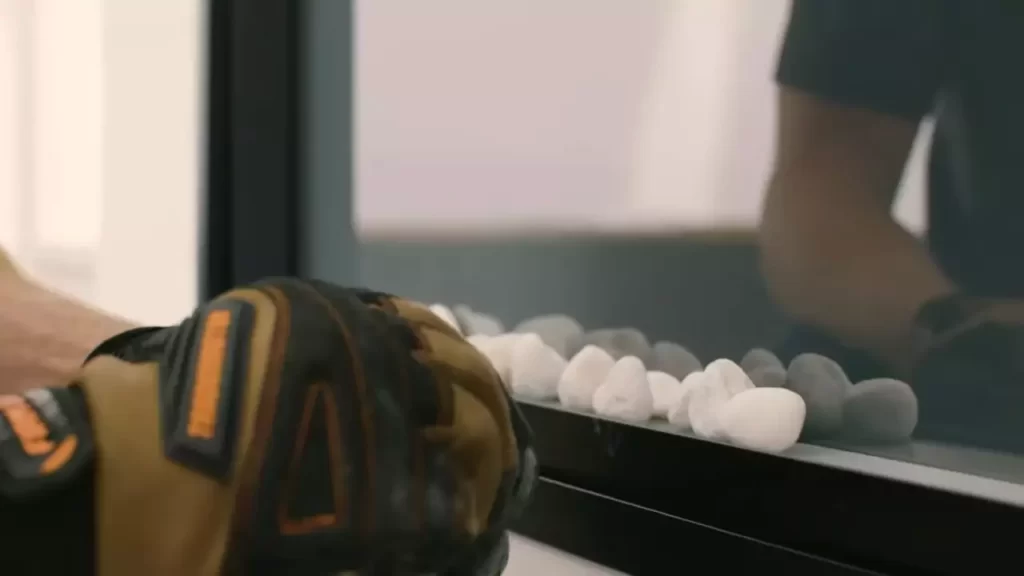
Enjoying Your Recessed Fireplace
Lighting your first fire safely
Once you have successfully installed your recessed fireplace, it’s time to start enjoying the warm and cozy ambiance it brings to your home. But before you can sit back and relax, it’s important to know how to safely light your first fire. Following these steps will ensure that you can enjoy your fireplace without any concerns:
- Start by making sure that the flue is open. This allows the smoke to properly vent out of your home.
- Use dry, seasoned wood for your fire. Wet or green wood can create excessive smoke and can also contribute to the build-up of creosote in your chimney.
- If you are using a gas fireplace, make sure to follow the manufacturer’s instructions for safely lighting the pilot light.
- If you are using a traditional wood-burning fireplace, use newspaper or kindling to start the fire. Place the kindling at the bottom of the fireplace and arrange the logs on top in a criss-cross pattern to allow for proper airflow.
- Never use lighter fluid or gasoline to start a fire in your fireplace as it can be extremely dangerous.
- Always supervise the fire and never leave it unattended. Make sure to extinguish the fire completely before leaving the room or going to bed.
By following these precautions, you can confidently enjoy the warmth and beauty of your recessed fireplace without any worries.
Maximizing the heating efficiency
Apart from the cozy ambiance, a recessed fireplace can also be a great source of heat during the colder months. Here are some tips to maximize the heating efficiency of your fireplace:
- Make sure your fireplace is properly sealed. Any cracks or gaps can result in heat escaping from your home and decrease the efficiency of your fireplace.
- Consider using a fireplace insert. These inserts are designed to increase the heating efficiency of your fireplace by directing more heat into your living space.
- Use a fireplace grate or fireback to reflect the heat back into the room.
- Close the damper when the fireplace is not in use. This will prevent drafts and cold air from entering your home.
- Regularly clean and maintain your fireplace. A buildup of soot and debris can hinder the heat flow and decrease the efficiency of your fireplace.
By implementing these strategies, you can make the most out of your recessed fireplace and keep your home warm and comfortable.
Creating a cozy and inviting atmosphere
A recessed fireplace not only provides warmth but also adds a touch of charm and coziness to any space. Here are some suggestions to create a cozy and inviting atmosphere around your fireplace:
- Add comfortable seating near the fireplace. Placing a cozy armchair or a plush sofa close to the fireplace will provide you with the perfect spot to relax and enjoy the warmth.
- Arrange decorative accessories such as candles, vases, or artwork on the mantle. This will enhance the visual appeal and create a focal point in your room.
- Consider installing a built-in bookshelf or floating shelves on the sides of the fireplace. This will not only provide additional storage but also add a stylish touch.
- Use warm and inviting colors in your decor. Choose soft, earthy tones or rich jewel tones to create a cozy atmosphere.
- Accessorize your fireplace with a beautiful fire screen or glass doors. This not only adds a decorative element but also helps to keep sparks contained.
By incorporating these ideas, you can transform your recessed fireplace into a charming and inviting space that will be the focal point of your home.
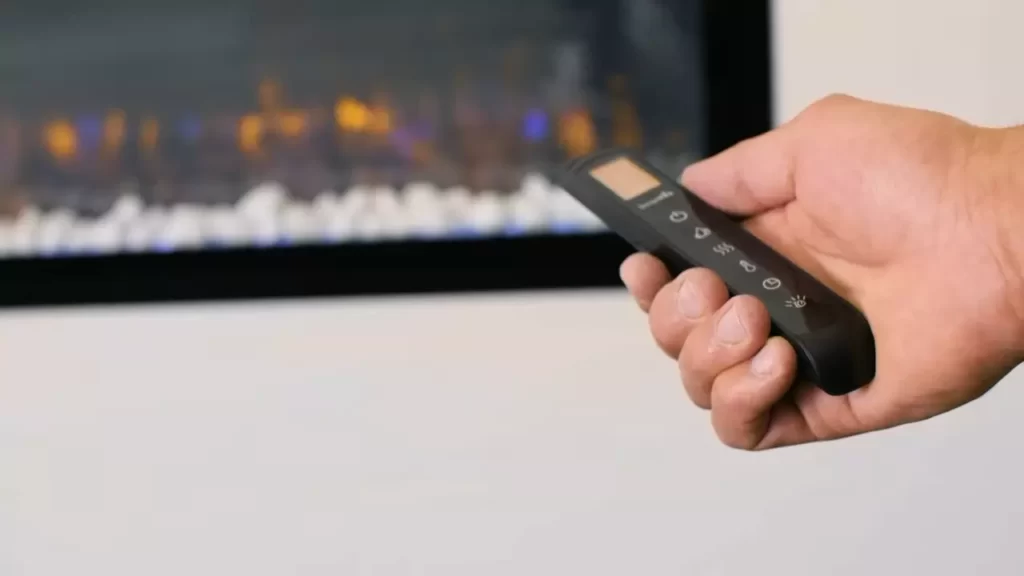
Additional Considerations
When installing a recessed fireplace, there are a few additional considerations that you should keep in mind to ensure a successful and efficient installation process. These considerations include exploring alternative fireplace options, budgeting for installation and ongoing costs, and researching local fireplace installation professionals. Let’s delve into each of these considerations in further detail:
Exploring alternative fireplace options
Before diving into the installation of a recessed fireplace, it may be worth exploring alternative fireplace options that could better suit your needs and preferences. While a recessed fireplace offers a sleek and modern look, there are various other fireplace styles available:
- Traditional wood-burning fireplaces: If you enjoy the crackling sound and the smell of wood burning, a traditional wood-burning fireplace may be the perfect choice for you. However, keep in mind that it requires regular maintenance, such as cleaning and stocking wood.
- Gas fireplaces: Gas fireplaces offer convenience and efficiency, as they can be easily controlled with a switch or remote control. They require minimal maintenance and provide consistent heat. Additionally, they come in various designs, including log sets and contemporary styles.
- Electric fireplaces: If you’re looking for a fireplace that’s easy to install and use, an electric fireplace might be the way to go. These fireplaces don’t require any venting and can be conveniently plugged into an electrical outlet. They also offer customizable flame effects to create a cozy ambiance.
By exploring alternative fireplace options, you can ensure that you make an informed decision and select the fireplace style that best suits your lifestyle and aesthetic preferences.
Budgeting for installation and ongoing costs
Installing a recessed fireplace involves both initial installation costs as well as ongoing expenses. It’s essential to budget for these costs to ensure that the installation process and subsequent use of your fireplace fit within your financial means.
When budgeting for installation costs, consider factors such as:
- The cost of the fireplace unit itself
- Any necessary permits or inspections
- The cost of required materials and tools
- Professional installation fees, if applicable
In addition to the installation costs, remember to factor in ongoing expenses, such as:
- Fuel costs: Depending on the type of fireplace you choose, you may incur ongoing costs for wood, natural gas, or electricity.
- Maintenance and cleaning: Regular maintenance, such as chimney inspection, cleaning, and filter replacement, is essential to keep your recessed fireplace functioning efficiently and safely. Consider the expenses associated with these maintenance tasks.
- Energy efficiency: Selecting an energy-efficient fireplace can help you save on energy costs in the long run. Look for models with high energy efficiency ratings and consider their cost-saving benefits.
By carefully considering the installation and ongoing costs, you can plan your budget effectively and ensure a smooth financial experience with your recessed fireplace.
Researching local fireplace installation professionals
Installing a recessed fireplace is a task that requires expertise and precision. To ensure a seamless installation process, it’s crucial to research and select a reliable fireplace installation professional in your local area.
When researching professionals for your fireplace installation, consider the following:
- Experience and expertise: Look for professionals who have substantial experience with recessed fireplace installations. Check their credentials, certifications, and customer reviews to guarantee their expertise in the field.
- Portfolio: Request to see their portfolio or examples of their previous fireplace installations. This will give you an idea of the quality of their work and whether their style aligns with your vision.
- References: Reach out to previous customers and ask for feedback on their experience with the professional. This will help you assess their reliability, professionalism, and timeliness.
- Cost estimates: Obtain quotes from multiple professionals and compare them to ensure you’re getting competitive pricing for the installation services.
Investing time in researching and selecting an experienced fireplace installation professional will give you peace of mind, knowing that your recessed fireplace will be installed securely and efficiently.
Frequently Asked Questions Of How To Install Recessed Fireplace
Can A Fireplace Be Recessed?
Yes, a fireplace can be recessed.
Can A Wall Mount Fireplace Be Recessed?
Yes, a wall-mounted fireplace can be recessed.
How Do You Install An Electric Fireplace Insert In The Wall?
To install an electric fireplace insert in the wall, start by choosing a suitable location. Ensure the wall is structurally capable and has an electrical outlet nearby. Cut a hole in the wall, following the manufacturer’s guidelines. Insert the fireplace unit into the hole and secure it using screws.
Connect the unit’s wiring to the electrical supply, and test for proper function.
How High Should A Recessed Fireplace Be?
A recessed fireplace should be installed at a height that is comfortable and safe for use. It is recommended to consult with a professional to determine the exact height based on your specific needs and the regulations in your area.
The height should be suitable for viewing and reaching the fireplace easily.
Conclusion
Installing a recessed fireplace can be a great addition to your home, providing both warmth and ambiance. By following the step-by-step guide provided in this blog post, you can easily install a recessed fireplace on your own. Remember to gather all the necessary tools, measure carefully, and take the time to ensure proper installation.
With a little patience and effort, you’ll soon be enjoying the cozy glow and comforting heat of your new recessed fireplace. Let the flickering flames enhance the atmosphere of your space and create lasting memories with family and friends.
